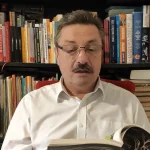The Iron Age Danube Route addresses one of the most fragile, though imposing and attractive prehistoric archaeological phenomena, the Iron Age landscapes. Characterised by monumental structures, such as burial mound cemeteries, flat cemeteries, fortified hilltop settlements, and oppida, as well as elements indicating the complex organisation of space, Iron Age landscapes belong to the period between the 9th and the end of the 1st century BC, according to the official website of the Iron Age Danube Route Association (IADR).
This association was founded back in July 2020 with the goal of enhancing international scientific cooperation regarding the period of the Iron Age, as this is a period marked by an extraordinary corpus of movable and intangible heritage. The focus on the Danube region is, among other things, owing to this heritage being housed in numerous museums across the Danube region, including the most important regional and national institutions.
”Compiling the existing sources of knowledge and creating a strong interdisciplinary and international network of expert institutions from Austria, Croatia, Hungary and Slovenia in the fields of archaeology, cultural heritage protection, tourism, as well as local stakeholders, the Iron Age Danube Route Association was founded in July 2020 with the aim of the further development and management of the IADR,”
The Archaeological Museum in Zagreb is one of the founding partners of the association, and other institutions from Croatia include the Centre for Prehistoric Research, Kaptol County, Papuk Nature Park, and Faculty of Humanities and Social Sciences at the University of Zagreb. Other partners include museums and faculties from Hungary, Austria, and Slovenia, all bringing their top experts in the field to the table for the association to work.
And that work paid off. As reported by the Archaeological Museum in Zagreb’s website, the European Council granted the culture route certificate to the Iron Age Danube Route which stretches through Austria, Bulgaria, Croatia, Hungary, Germany, and Slovenia.
”This is the first culture route of The European Council with its headquarters in Croatia“, said the Museum’s website adding that the route is managed by the Association.
”The Iron Age Danube Route matched the criteria by the five priority fields of action by the European Council. These include cooperation in research and development, the progression of European heritage and history, educational exchanges, youth culture, engagement within the frame of the current cultural and artistic practices and sustainable cultural tourism development,” explained the website.
The certificate is important as it enhances the overall visibility of the sight, allowing the public to become better informed about the area, and enriching the overall Croatian cultural and tourist offer, creating new opportunities both for business and for scientific and educational purposes.
Did you know Vukovar is located along the Danube river? Learn more in our TC guide.
For more about Croatian history, follow TCN’s dedicated page.












